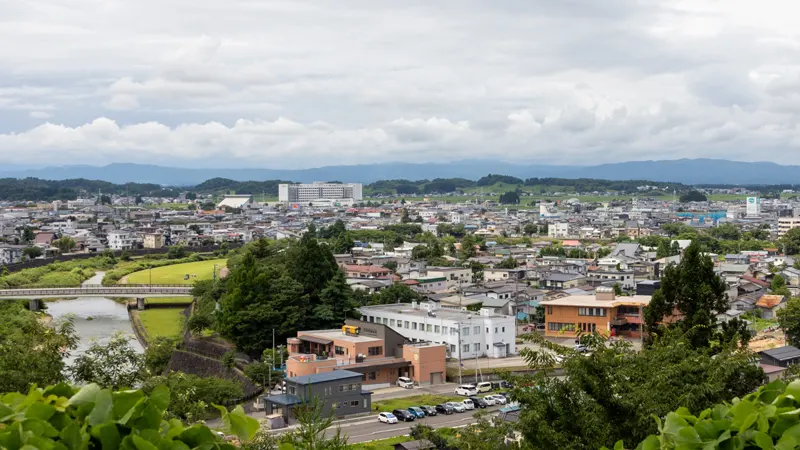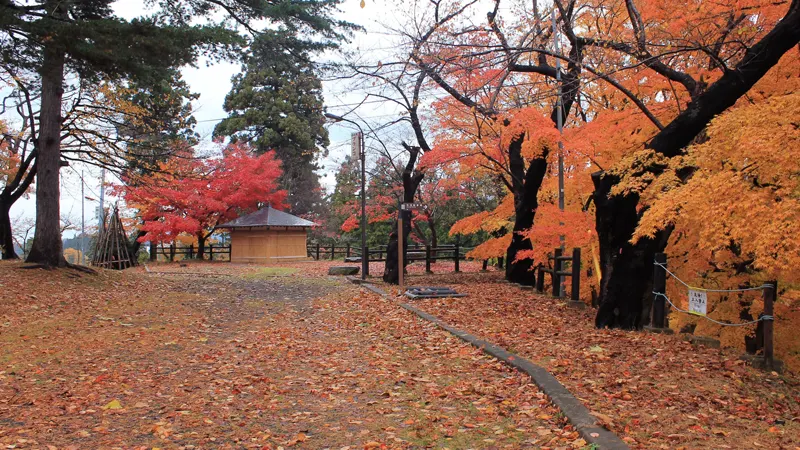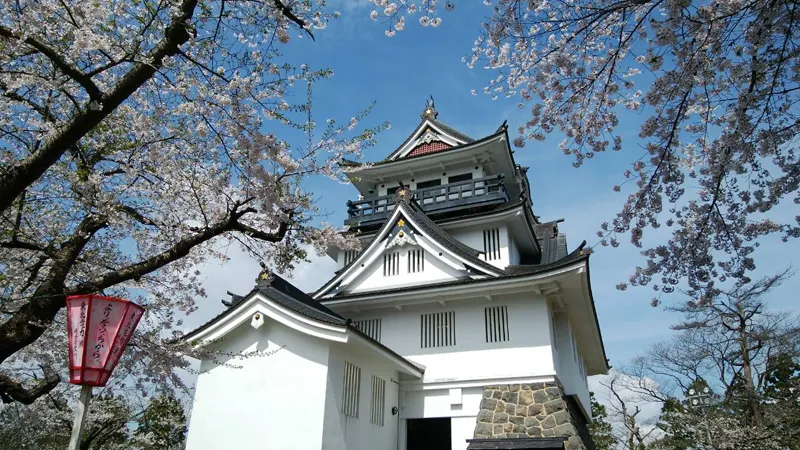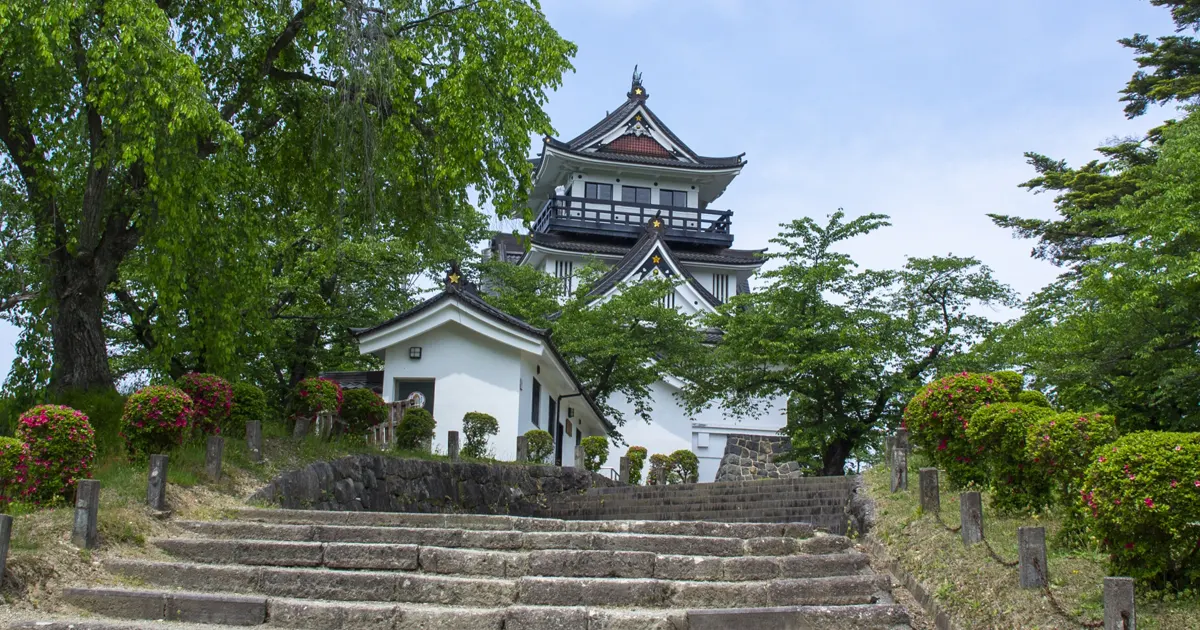Yokote Castle, located in the center of Yokote City in Akita Prefecture, is a popular Japanese observatory facility reconstructed on the ruins of a castle said to have been built by the Onodera clan during the Sengoku period. Inside the building, cultural exhibits and historical models highlight the city’s rich heritage, allowing visitors to appreciate the depth of Yokote’s Japanese culture.
Now part of Yokote Park, the former castle grounds have become a popular sightseeing viewpoint overlooking Yokote City and Mount Chokai in northern Japan. This article introduces the views from the castle-style observatory, its interior displays, and the surrounding attractions throughout the seasons.
Seasonal Views from Yokote Castle


Views of Yokote Basin and Mount Chokai
From the three-story observatory, visitors can enjoy sweeping views of the Yokote Basin, the surrounding mountain ranges, and the city below. On clear days, Mount Chokai can be seen in the distance, while in spring, cherry blossoms spread beneath the tower, creating a stunning scene. The glass-paneled structure allows a full view in every direction, revealing the changing atmosphere of each season. At night, the city lights shimmer, offering a calm and memorable view.
Yokote Castle Exhibits on History and Culture
Inside the castle, detailed exhibits present Yokote’s history and Japanese cultural heritage. Visitors can learn about the Onodera clan, who once ruled the area, and the castle town that developed under the Satake clan. Models and historical photographs provide visual insight into the region’s evolution, helping visitors understand its past. English explanations are available throughout, making the displays accessible for international guests.
Cherry Blossoms and Nature Walks in Yokote Park
Surrounding Yokote Castle, Yokote Park serves as a relaxing public space for locals and tourists alike. In spring, around 3,000 cherry trees bloom in full glory, making Yokote Park one of the most popular cherry blossom spots in Akita for hanami picnics. Early summer brings azaleas, autumn fills the park with colorful leaves, and each season offers its own beauty. Well-maintained walking paths make it easy to stroll and enjoy the natural scenery at a comfortable pace.
Exploring Yokote Castle Town and Kamakura Museum

Around Yokote Castle, several attractions showcase the area’s history and nature. At the foot of the hill lies the Yokote Kamakura Museum, where visitors can experience traditional Japanese winter culture through life-sized snow hut exhibits and displays on the history of the Yokote Snow Festival. Shuttle buses also run from Yokote Station to Akita Furusato Village, a popular cultural facility where visitors can explore local crafts and cuisine.
In the city center, the Yokote Snow Festival is held every February, filling the streets with glowing kamakura snow huts that create an enchanting nighttime view. In other seasons, visitors can enjoy cherry blossoms along the Yokote River or summer fireworks festivals, offering a variety of seasonal charms throughout the year.

